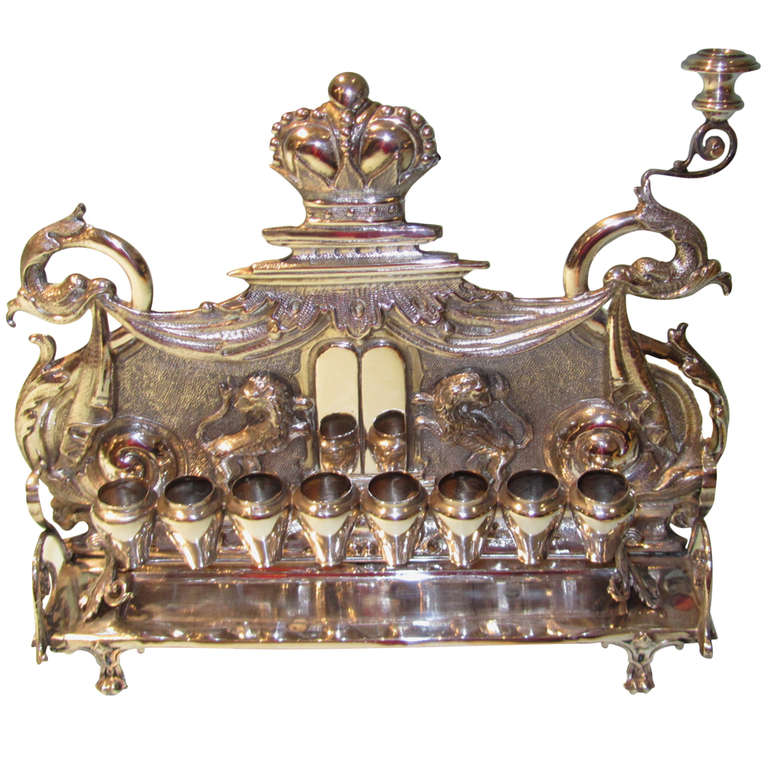| Portable Vertep stage with puppets. |
Christmas was the beginning of a festive time in Eastern
Europe. In Ukraine, festivities
began on Christmas day, celebrated on January 7, according to the Julian
calendar and concluded on January
19, with the celebration of the Epiphany.
Ukrainian Vertep
One of the most interesting Ukrainian Christmas customs was caroling
and vertep. Vertep is a portable
puppet theater, which was carried by carolers from village to village. This
custom began in the 16th century, and reached the height of its
popularity in the 1750’s. Students
at the Mohyla Academy in Kiev, contributed many ideas to the theater, including
the two part performance.
The theater itself was small and portable. It was a two-story structure, with two
stages, one on top of the other. The stages had horizontal and vertical grooves
cut into the floors, which enabled the puppeteer to move the puppets around.
The puppets were wooden, with a wire attached to one leg, which enabled the
puppeteer,who was standing behind the stage, to control the puppet’s movements. The plays were accompanied by
music, a choir, cymbals. flute, drum, violin and bandura, a large Ukrainian stringed instrument,
similar to a lute.
Each play had two acts. The first act, performed on the upper stage, was
religious. The nativity story was
presented and sometimes a story about Rachel and King Herod was performed. The second act took place on the lower
stage. Short, humorous scenes were
performed to entertain the spectators.
There were stock characters, representing people in village life. Every play included “Kozak Zaporzhets,”
a character who represented a hero popular in Ukrainian folk tales. The Kozak character was always larger
than the other puppets, he smoked a pipe and played the bandura. The stories were about daily life with characters representing greed, cowardice, and cheating. The Kozak always prevailed, outwitting
all, including the devil.
Vertep plays declined in the middle of the 1800’s, which is probably why my grandmother and great-aunts never mentioned them. Vertep lives on in miniature nativity scenes displayed in people’s homes, and carolers dressed
up as characters from the vertep plays.
Vertep plays continue today in
Ukraine and the United States with live actors instead of puppets playing the characters.
Polish Szopka
A custom similar to Vertep developed in Poland. It began in the 13th century with a creche, displayed in a church in Krakow. Living nativities
followed and when dialogue was added they became jaselka plays.
By the eighteenth century the still figurines in nativities were replaced by puppets, first stick puppets, then marionettes. Puppet shows were banned from the church, and moved into the towns and villages. They became associated with caroling and lost some of their religious connections. The plays were a reflection of daily life in Poland, making fun of everyday situations.
The theaters, called szopkas, were carried
from town to town by carolers. They performed religious and secular
plays often with real Polish characters such as Tadeuz Kosciuszko, or mythical ones
like Pan Twardowski and the Dragon of Wawel.
Krakow is the center of szopka making and many are made for the tourist market. People built elaborate szopkas with
two towers, resembling St Mary’s Church in Krakow and a central dome modeled after the Zygmunt Chapel of Wawel
Castle. The practice of building
szopkas declined during World War I, but was revived in the 1920’s. Today, the city of Krakow sponsors a Szopka contest every year.
| Contemporary Szopka puppets in front of traditional characters. |
Sources:
Brama, "Ukrainian Christmas Puppet Theater, VERTEP". www.brama.com/art/christmas
Internet Encyclopedia of Ukraine, "Vertep, New Year, Epithany". www.encyclopedia of Ukraine.com
Internet Encyclopedia of Ukraine, "Vertep, New Year, Epithany". www.encyclopedia of Ukraine.com
Polish American Journal, "Szopka, A Fairy Tale Stable." www.polamjournal.com/holidays
Rukutvory-Ukrainian Folk Art on Line, rukutvory.com.ua







